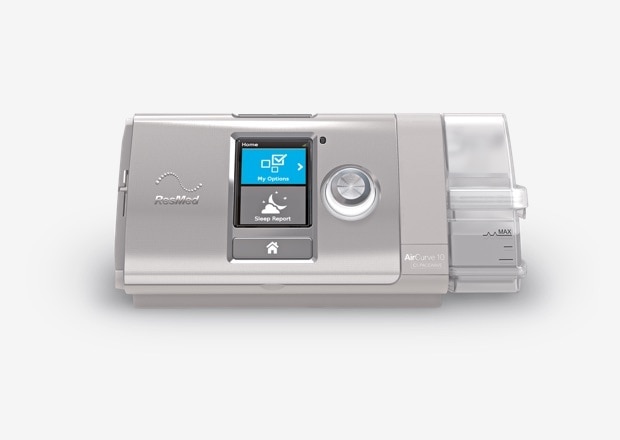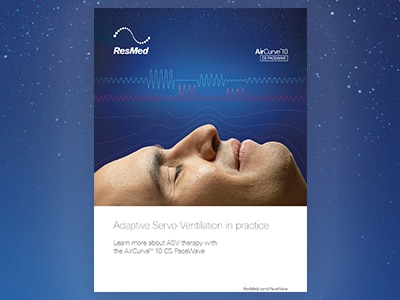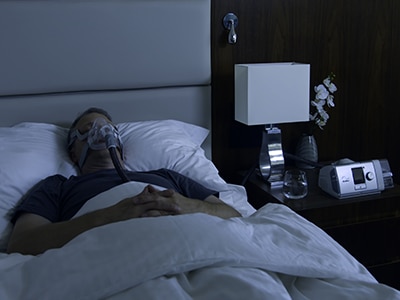How the AirCurve 10 CS PaceWave algorithm works?
Minute Ventilation
As of July 2019, PaceWave is the only adaptive servo-ventilation device to target the patient’s own recent minute ventilation.
- PaceWave algorithm calculates respiratory parameters (frequency, shape of the breathing wave, tidal volume) at a split-second resolution on a 3-minute moving average, in order to calculate the patient’s own minute ventilation.
- The target is automatically set to 90% of the patient’s average recent minute ventilation to prevent over-ventilation.
- PaceWave compares the patient’s current minute ventilation with the target minute ventilation and responds rapidly and precisely to changes in minute ventilation.
- Pressure support is increased when minute ventilation falls below target and is reduced to the minimum level set by the physician when minute ventilation exceeds the target.
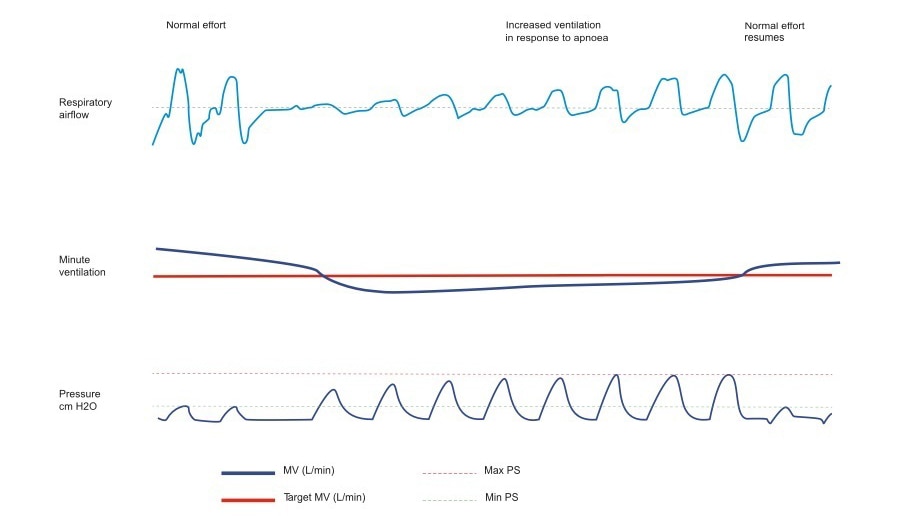
Breathing phase mapping
PaceWave analyses 13 points per breath and accurately monitors and adjusts its response to deliver a comfortable experience for the patient.
- With its high-resolution breath phase mapping algorithm (13 points per breath), PaceWave accurately monitors variations in minute ventilation, which depends on respiratory rate and breathing pattern.
- The PaceWave algorithm adapts precisely and rapidly in response to the patient’s needs.
- Effective synchronisation with patient’s own respiratory patterns participate to therapy comfort.
- PaceWave continuously learns from each patient’s unique respiratory pattern.
- The Easy-Breathe wave form mimics the shape of natural breathing and pressure support is synchronised with the patient’s spontaneous breathing.
- Pressure support is synchronised with the patient’s spontaneous breathing and adapted to the minute ventilation, in order to achieve the target pressure. This provides comfort that supports the patient’s acceptance of the therapy.
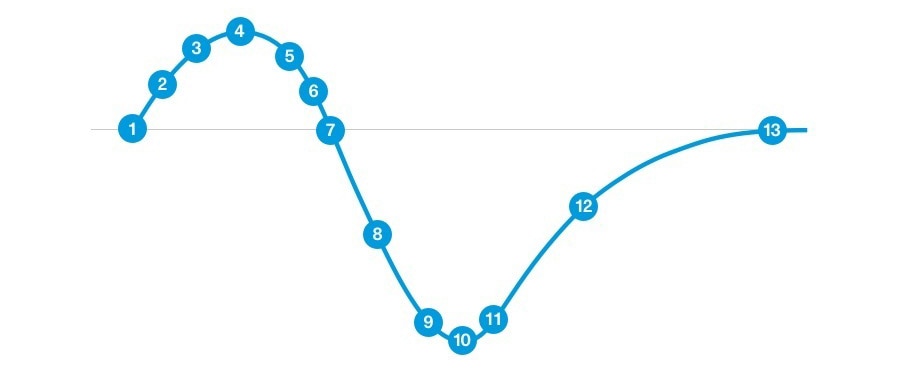
ASV and ASVauto mode
The AirCurve 10 CS PaceWave features two modes: ASV and ASVAuto. It ensures effective treatment by stabilising upper airways and delivering constant expiratory pressure.
- ASV mode: expiratory positive airway pressure is manually titrated and set at the start of therapy.
- ASVAuto: expiratory positive airway pressure is automatically adjusted in response to predictive signs of upper airway obstructions (apnoea, flow limitation and snoring). Automatic expiratory positive airway pressure responds to obstructive events and stabilises the upper airways.
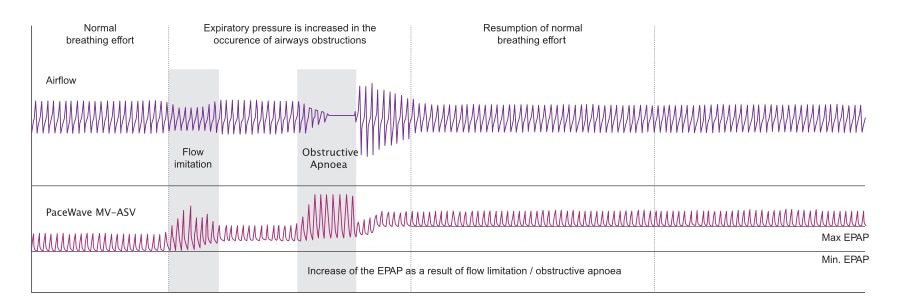
Learn more about our ASV* solution
Design to deliver personalised therapy for patients with central sleep apnoea and with or without obstructive sleep apnoea.
Looking for more information about CSA and ASV?
Reference:
* ASV therapy is contraindicated in patients with chronic, symptomatic heart failure (NYHA 2-4) with reduced left ventricular ejection fraction (LVEF ≤ 45%) and moderate to severe predominant central sleep apnoea.
- Cistulli PA, Armitstead J, Pepin JL, Woehrle H, Nunez CM, Benjafield A, Malhotra A. Short-term CPAP adherence in obstructive sleep apnoea: a big data analysis using real world data. Sleep Med. 2019 Jan 11. Pi:S1389-9457(18)30797-4.
- Carnevale et al. Effectiveness of Adaptive Servo-Ventilation in the treatment of hypocapnic central sleep apnoea of various etiologies Sleep Medicine 2011 Dec;12(10):952-8
- Allan et al. Efficacy of adaptive servo ventilation in treatment of complex and central sleep apnoea syndromes Chest 2007;132:1839-46
- Morgenthaler et al. Adaptive servoventilation versus noninvasive postive pressure ventilation for central, mixed and complex sleep apnoea sydromes. Sleep 2007 ; 30(4) :468-75
- Brown et al. A retrospective case series of adaptive servoventilation for complex sleep apnoea. J Clin Sleep Med 2011 ;7(2):187-95
- Randerath W et al. Defintion, discrimination, diagnosis and treatment of central breathing disturbances during sleep ERJ Express. Published on December 5, 2016 as doi: 10.1183/13993003.00959-2016
